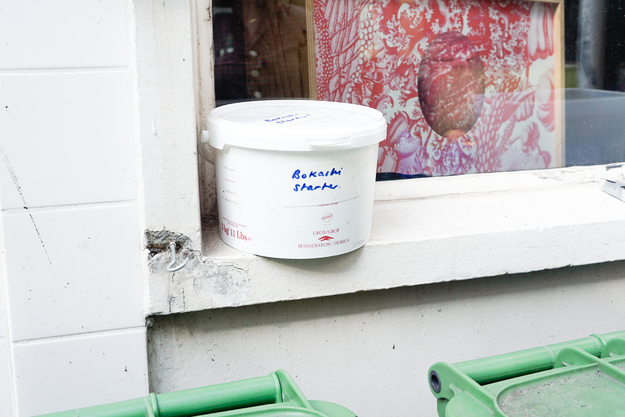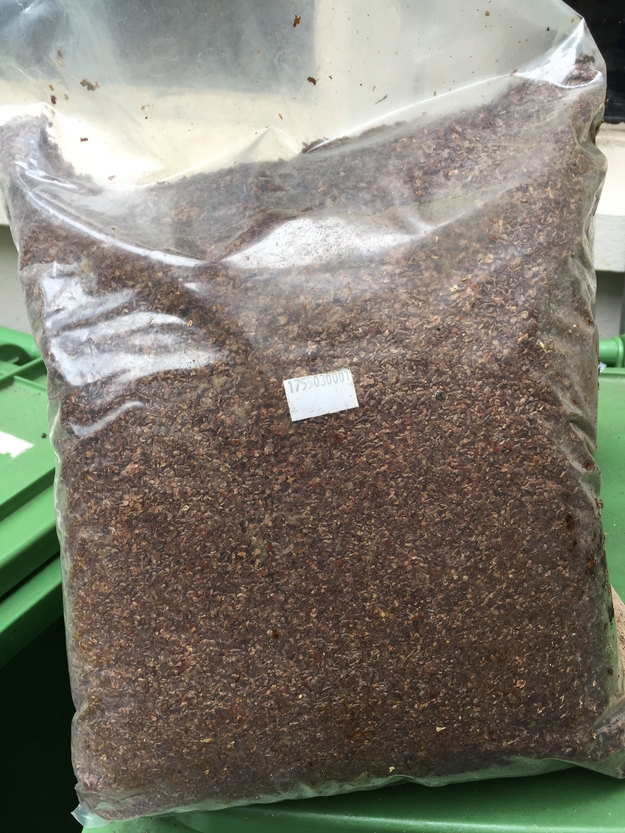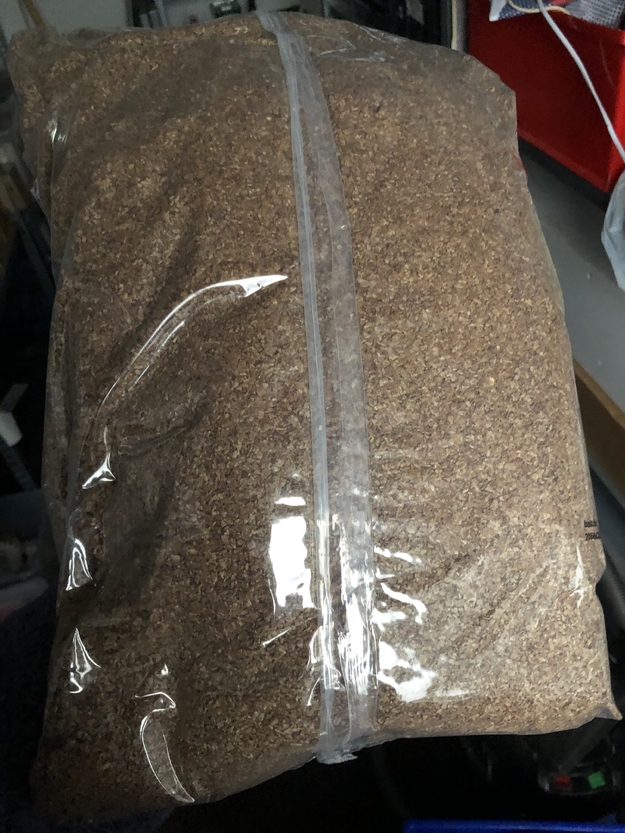Q. How long does the bokashi starter last as it has been stored away?
A. If it is stored in a dark and cool place or the bag is unopened it might be usable but the main teller is the colour. Healthy Bokashi starter is lighter in colour, if the starter is darker it is probably too old. (see pictures at the bottom of the page)
Q.When stored outside the corner space can get quite hot, how does heat impact the starter itself? Is it good to keep it outside in general?
A.The warmer, the more active the microbes get. Keep it at 15-23 degrees max. The most important thing is to keep the starter airtight. When oxygen enters, it won’t stay fresh and it will rot.
Q.What do I do if Maggots get into Bokashi?
A.Maggots etc should not be in Bokashi. It is important to process food waste as quickly as possible. Empty and clean with hot water and start fresh.
Q.What if there’s mould?
A.We like white fluffy looking mould or a layer on top of the bucket/container! It is actually yeast! So, white is good, black or green is bad and you can try to take those pieces out of the container and at some Starter where you collected it. Give a boost with good microbes on that spot, and maybe the process will continue just fine.
Q. I am unsure if it smells good, what should it smell like?
A. It should smell attractive and like yoghurt, silage etc
Q. How do you store the Bokashi tea?
A.You can store it in a plastic bottle, not from glass! Sometimes there is some gas and glass would be dangerous as it could break. Some gardeners save it for 1 month. Press as much air out of the bottle as possible. Store it in a dark and cool place. No fridge necessary.
Q. As there has been a problem with the taps before, what if there is a future problem with taps on the bottom of the bins?
A. Is it possible to get new taps from Agriton, as they have had this complaint before.
Q. What advice would you give for using bokashi tea in aquapaonics? ( is has been decided that the tea will not be used in aquaponics but useful information )
A. With warm weather, the temperature of the pond water also rises and the growth of micro-organisms is activated. You can do several things to promote good water quality and provide the plants with the necessary nutrients.
To promote the natural balance of the water you can distribute Microferm. The Effective Microorganisms in Microferm help convert organic material (bottom sludge, fish excrement) into nutrients for the pond plants and thus prevent rotting. In ponds with a weak microbial climate, the intermediate products produced (ammonia and nitrite) are converted slowly. It is very important that these substances are present in low concentrations. Ammonia and nitrite have a negative impact on fish health. With Microferm you add healthy micro-organisms to your pond. Ammonia and nitrite are thus quickly neutralised and the formed nitrate as an end product appears to be an ideal food source for pond plants. A biological balance is established, which improves the water quality.
A lot of silt on the bottom has a negative effect on water quality. Therefore make regular use of EM® Pond balls. These special fermented balls promote good microbial diversity in the pond water. You throw the EM® Pond balls into the water, they sink to the bottom and dissolve slowly. The EM® in the pond balls digest the silt and contribute to the restoration of a good balance. Use preferably in spring.
In addition, add Ægir Sea Shell Lime regularly to adjust the reflection of sunlight.
Guideline:
1 litre Microferm per year with fish and other aquatic animals 1 litre/10 m3!.
1 EM® Pond Ball per 1 m2 of surface area.
1 kg Ægir Sea Shell Lime per 1 m2.
If you suffer from algae growth in the pond, you can also add EM® Vijver (0.5 l/10m3). EM® Vijver contains a high concentration of phototrophic bacteria that compete with the algae.
TIP: A UV lamp works as a disinfectant and therefore also has a negative effect on the effective micro-organisms present in the Microferm!
Trouble with thread algae? Sprinkle some Edasil Clay Minerals over the pond. The water will be a little cloudy for a while, but will sink to the bottom of its own accord.
If this page does not answer your question you can contact Simone Vos at agrition, she is always happy to help and sometimes will even offer a visit. Email her at svos@agriton.nl


